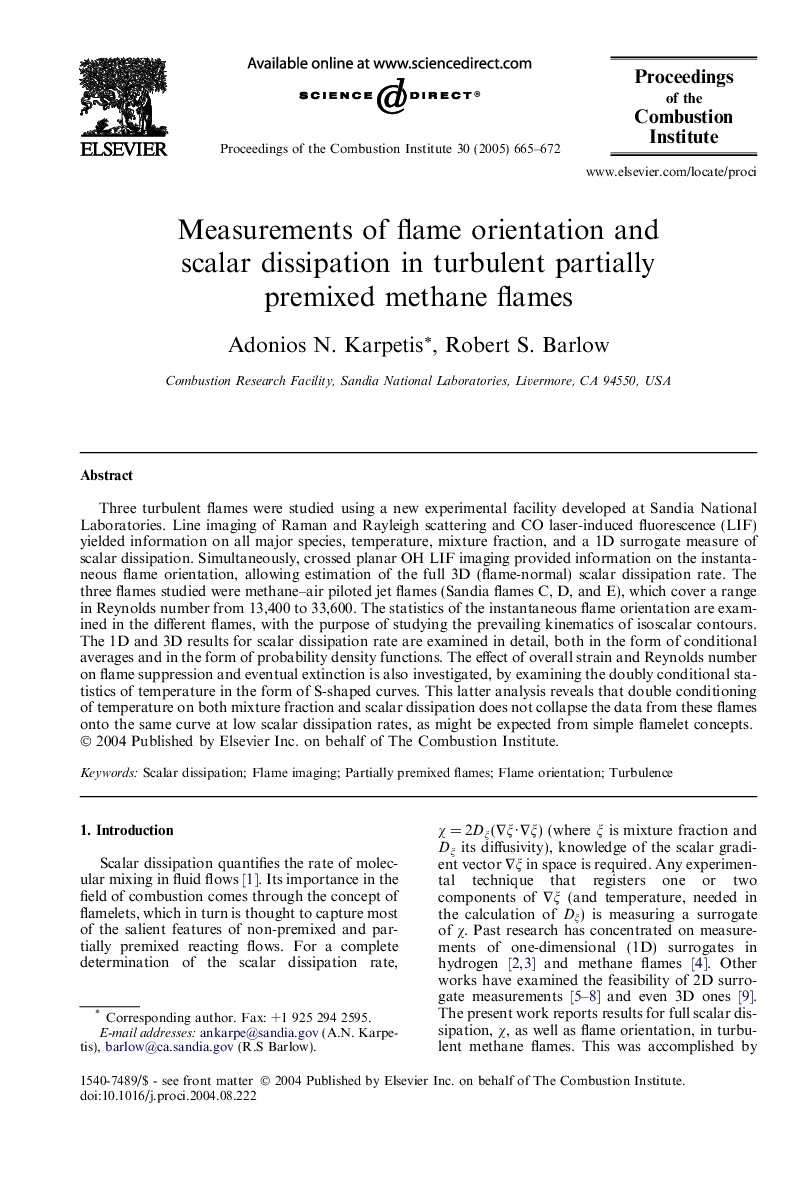| Article ID | Journal | Published Year | Pages | File Type |
|---|---|---|---|---|
| 9637389 | Proceedings of the Combustion Institute | 2005 | 8 Pages |
Abstract
Three turbulent flames were studied using a new experimental facility developed at Sandia National Laboratories. Line imaging of Raman and Rayleigh scattering and CO laser-induced fluorescence (LIF) yielded information on all major species, temperature, mixture fraction, and a 1D surrogate measure of scalar dissipation. Simultaneously, crossed planar OH LIF imaging provided information on the instantaneous flame orientation, allowing estimation of the full 3D (flame-normal) scalar dissipation rate. The three flames studied were methane-air piloted jet flames (Sandia flames C, D, and E), which cover a range in Reynolds number from 13,400 to 33,600. The statistics of the instantaneous flame orientation are examined in the different flames, with the purpose of studying the prevailing kinematics of isoscalar contours. The 1D and 3D results for scalar dissipation rate are examined in detail, both in the form of conditional averages and in the form of probability density functions. The effect of overall strain and Reynolds number on flame suppression and eventual extinction is also investigated, by examining the doubly conditional statistics of temperature in the form of S-shaped curves. This latter analysis reveals that double conditioning of temperature on both mixture fraction and scalar dissipation does not collapse the data from these flames onto the same curve at low scalar dissipation rates, as might be expected from simple flamelet concepts.
Related Topics
Physical Sciences and Engineering
Chemical Engineering
Chemical Engineering (General)
Authors
Adonios N. Karpetis, Robert S. Barlow,
